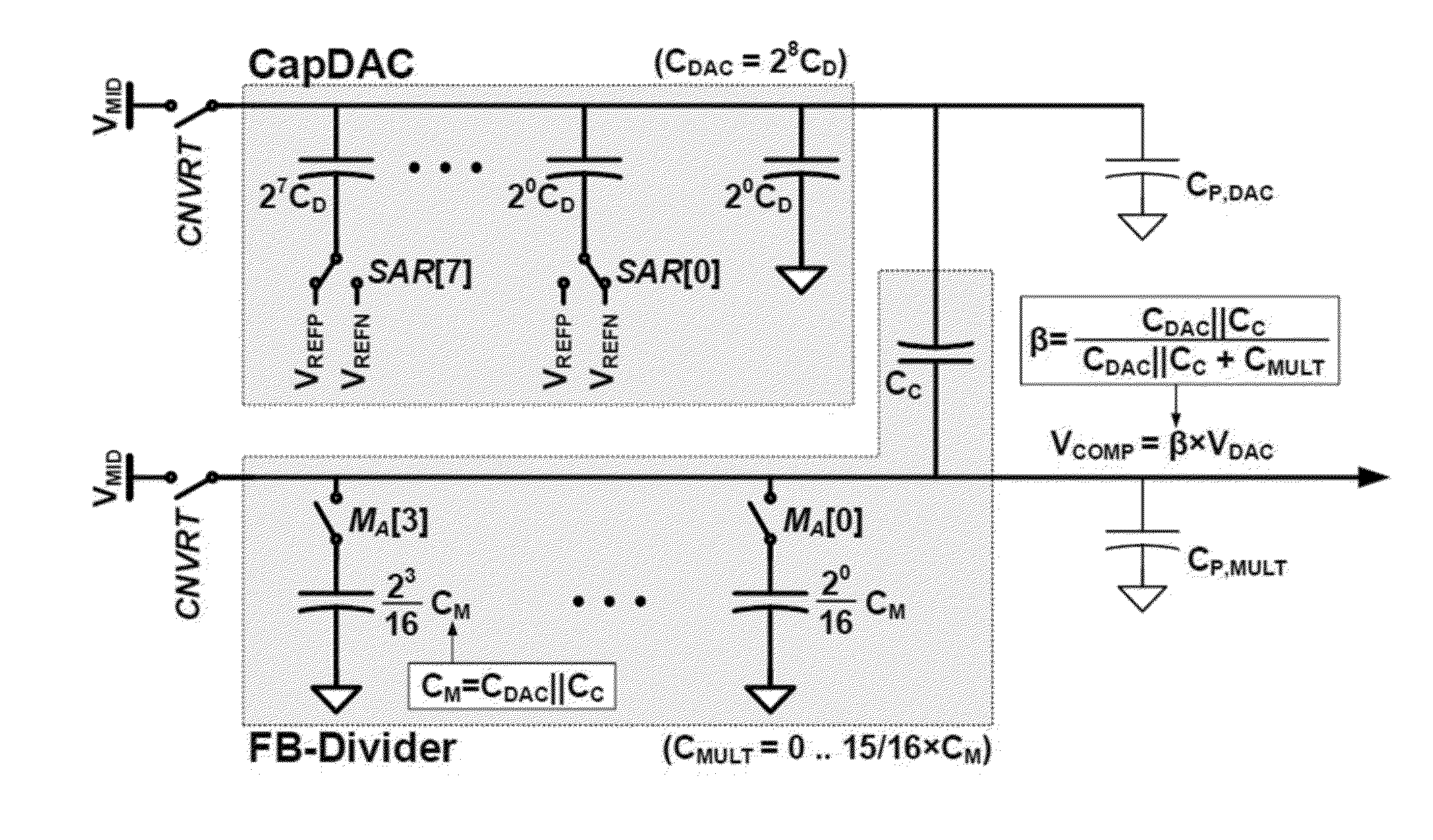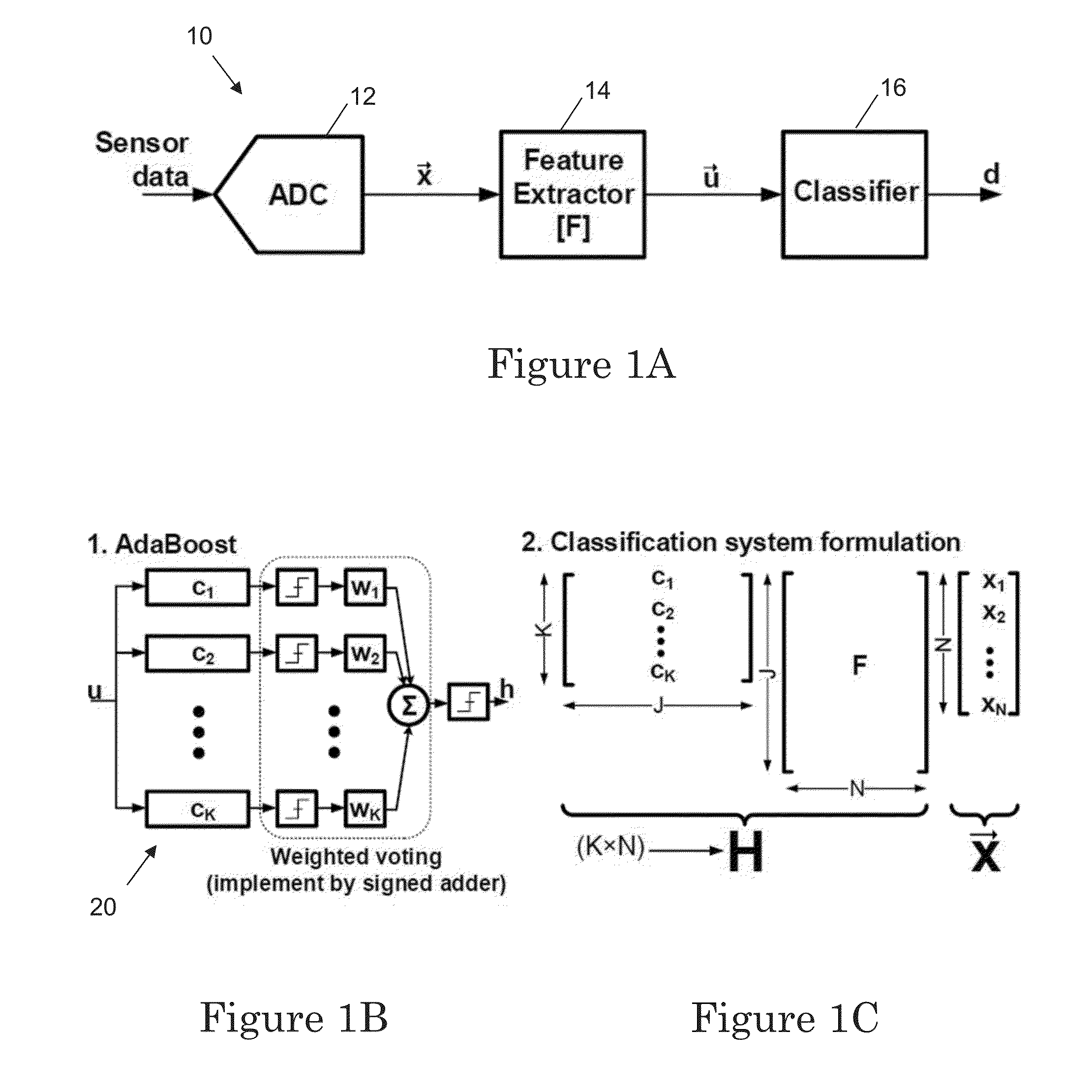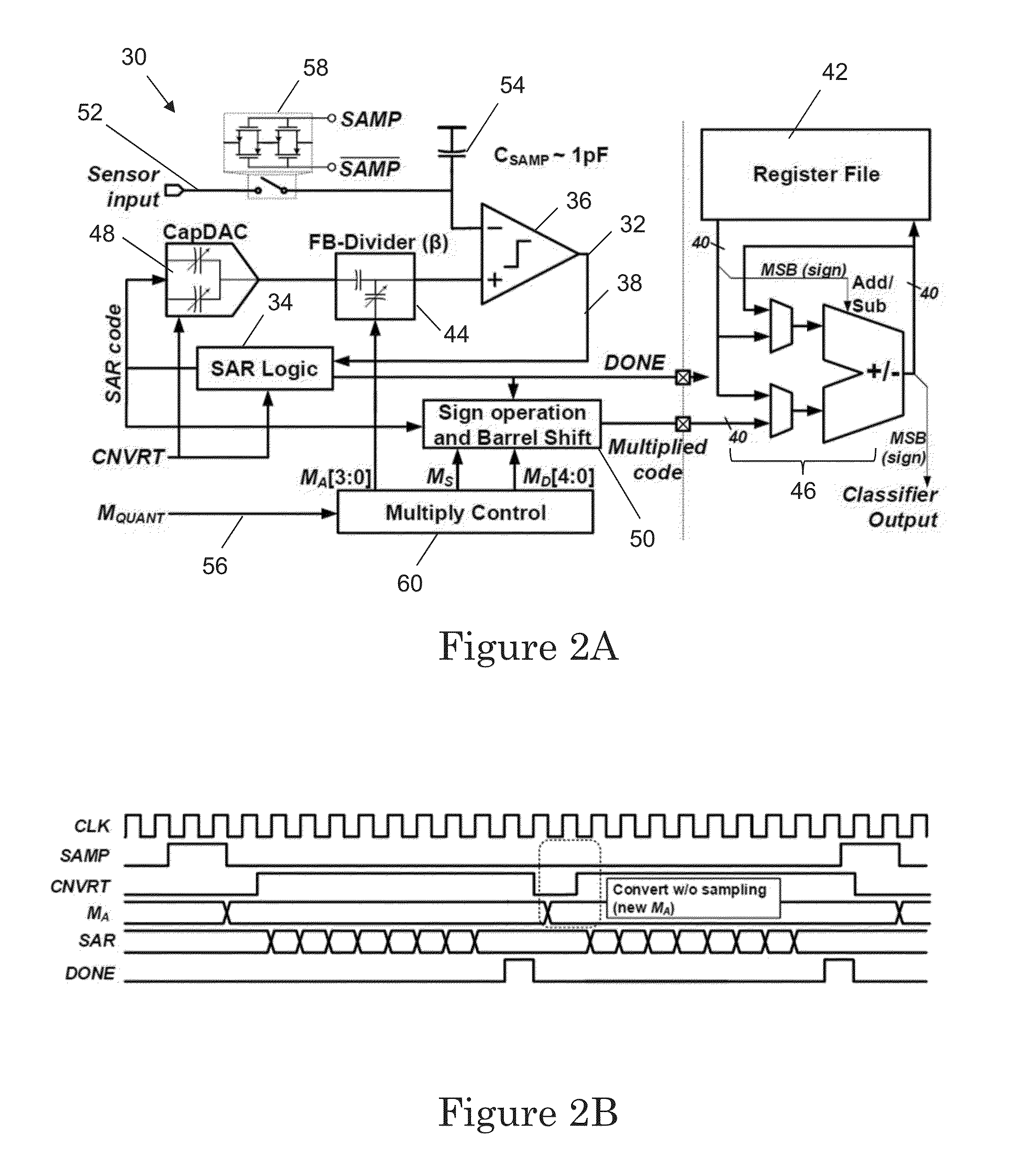Multiplying analog to digital converter and method
a technology of analog to digital converter and multiplying method, applied in the field of machine learning multiplying analog to digital converter, can solve the problem that the sensor signal is too complex to model analytically
- Summary
- Abstract
- Description
- Claims
- Application Information
AI Technical Summary
Benefits of technology
Problems solved by technology
Method used
Image
Examples
Embodiment Construction
[0024]Disclosed herein is an analog to digital converter (ADC) that integrates multiplication of input samples. This architecture may also be configured to multiply the input samples with an arbitrary matrix. This enables direct data conversion of information for classification. The multiplying ADC is demonstrated in two applications, (1) ECG-based cardiac-arrhythmia detection and (2) image-pixel-based gender detection, wherein feature extraction and the classification kernel are computed within the ADC operation.
[0025]FIG. 1A is block diagram of a conventional classification system 10. The system 10 includes an ADC 12 configured to receive an analog input (sensor data). The system 10 also includes a feature extractor 14 and a classifier 16 configured to generate a classification output d. The ADC generates a Conventional analog computation faces two key challenges: (1) the energy scales severely with the dynamic range, making multiplication particularly problematic; and (2) the abi...
PUM
 Login to View More
Login to View More Abstract
Description
Claims
Application Information
 Login to View More
Login to View More - R&D
- Intellectual Property
- Life Sciences
- Materials
- Tech Scout
- Unparalleled Data Quality
- Higher Quality Content
- 60% Fewer Hallucinations
Browse by: Latest US Patents, China's latest patents, Technical Efficacy Thesaurus, Application Domain, Technology Topic, Popular Technical Reports.
© 2025 PatSnap. All rights reserved.Legal|Privacy policy|Modern Slavery Act Transparency Statement|Sitemap|About US| Contact US: help@patsnap.com



